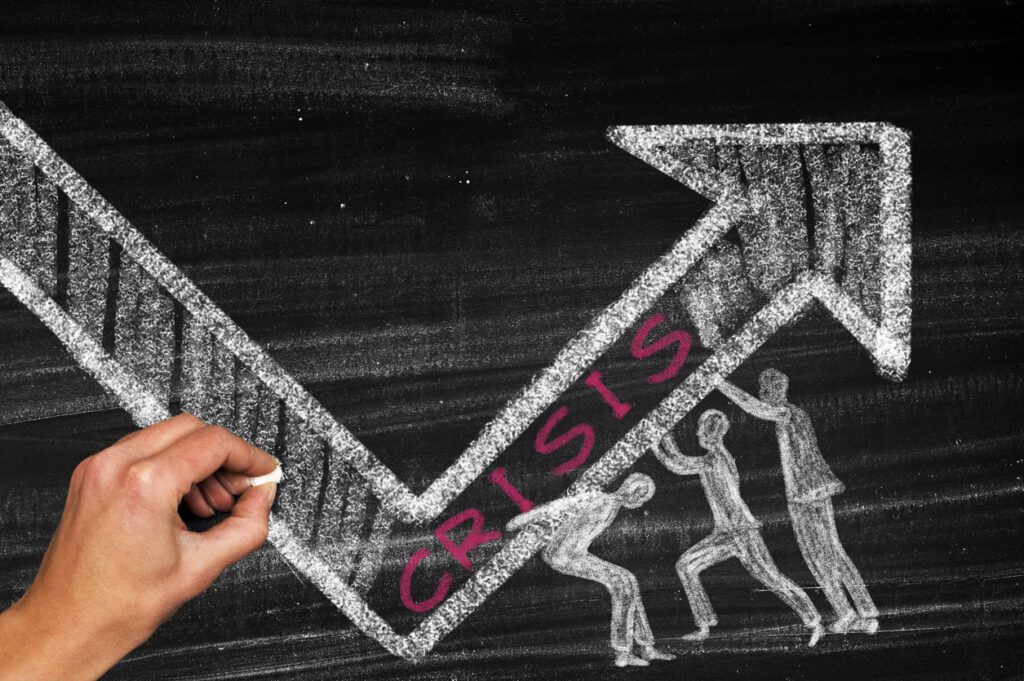Crisis management PR firms can help you and your business overcome the challenges presented by a natural or industrial disaster. Learn about these firms and their roles in our comprehensive guide.
Every company needs to be prepared for the inevitable public relations crisis – data breach, executive scandal, negative review, failed event, badly planned marketing campaign. Yep, it happens to us all. Hit by a PR crisis, you’ll want a quick and carefully crafted response. We’re speaking harm limitation, of us. It’s about defending your brand’s popularity.
You’ll want a PR crisis communications plan and crisis team in place BEFORE you need them. Although you may find yourself in a crisis situation where there’s nothing else to do, that doesn’t mean that you shouldn’t act.
A crisis will probably be a surprise. How you plan to reply, really can’t be. You’ll want to hold statements, trained spokespeople, social media monitoring, crisis alerts, role play, crisis manager, and more.
Table of Contents
What are Crisis Management PR Firms?
The definition of a PR crisis? A company or a person receiving negative, humiliating, damaging publicity.
PR crises are serious. Disruptive. Damaging. The rising popularity of social media implies that a crisis can go viral, immediately. Attempting to stop a crisis from going viral online, is hard.
Taco Bell underestimated the ability of social media when a video was posted of a worker calling the police when a deaf man tried to order food at a drive-thru. The video has received over 1.7M views and 14K+ comments. For sure, the majority are negative. It has been shared more than 27,000 times, and the number continues to rise.
For brands, the potential for crises has increased. Not restricted to a natural catastrophe or a company scandal. In this digital age – where, let’s face it, we’re online on a regular basis – brands need to deal with fake information, cyberattacks, defamatory rumors, and hackers.
We’re online. We share our outrage.
How on earth can a brand predict and control a PR crisis?
When is a Crisis, a Crisis?
Not every problem is a crisis. Before panic sets in, ask yourself this.
- Will this problem critically have an effect on my company’s workflow or send the board right into a frenzy?
- Will our bottom line be disrupted?
- Is our brand’s reputation is damaged – by stakeholders, clients, prospects, and industry?
You would possibly suppose that any of the above would represent a PR crisis disaster. However, you’d ride them, if they occurred individually. Even a few of them hitting simultaneously can be manageable. All three?
PR CRISIS!
Before we speak about a full-blown crisis, let’s take a step back. Overreacting will only heighten a possible problem.
Not every problem is a crisis…
A negative review, a mocking social media publish. These aren’t crises. Annoying, definitely. Reacting to them too strongly can improve the potential for reputational harm. It will probably turn them right into a PR crisis.
To find out the appropriate response, you have to categorize issues. Social media listening will assist you to recognize a problem that would explode right into a PR crisis.
Which PR Crises Demand Action?
There are three levels of PR crises that might require a swift and well-planned response from you.
PR Crisis Level 1
Level 1 has the potential to turn into a harmful PR crisis. Your brand will battle to walk away unscathed.
- Product recall – faulty and/or unsafe items
- Workplace harassment – abusive, discriminating behavior, intimidating, offensive
- Corporate communications impropriety – deception, theft, fraud, negligence, corruption, poor customer support
You’ll face damaging media mentions throughout the board – press, social media, news channels, television, and radio. Your response needs to be multichannel. Publish your apology and clarification on your website, throughout social media, press, and broadcast.
PR Crisis Level 2
Much less scary, but doesn’t need to be ignored in level 2. Customer complaints and criticisms could be handled rapidly before they turn into a serious crisis. Relying on where the negative comments appeared, you’ll be able to determine whether the problem could be dealt with one-to-one or publicly.
Monitor with social listening to catch early and respond rapidly.
PR Crisis Level 3
If one among your opponents or associated industries experiences a crisis, it might tarnish your brand reputation. By association.
The answer is competitive intelligence. You’re already monitoring your social media channels – I hope – so monitor these of your opponents too. When you get a sniff of a possible problem, publish a statement fast. Put distance between your brand and this looming crisis.
Track your opponents – listen to the chatter.
How is PR Related to Crisis Management?
A mishandled crisis is usually caused by a leader going rogue, considering they will deal with the situation without involving their group.
If that’s you, listen to me. You’ll make issues management worse. You can be blamed. Your brand will suffer from negative stories in public opinion. As much as you.
Build a crisis PR response crew and listen to it. Make it diverse. Why? As a result, your audience is diverse – totally different races, genders, ages, perspectives, politics, and many others.
Run your crisis response messages past to the team.
Accounts Manager Danny thinks the message is a winner. Sam in IT can’t relate to it. Steve in sales has scheduled a gathering with HR. Chris in operations hasn’t got a clue.
A diverse crew gives you totally different perspectives. Might your messages be misinterpreted? Will they fuel the crisis fire? What works for some, might offend or baffle others.
I’d recommend you run all future crisis communications by the strategic communications crew – advertising and digital marketing campaigns, media coverage press releases, media strategy on traditional and social media posts, and many others. Using them as a focus group to offer feedback. The leading PR crisis management firms can assist you with crafting a communications strategy that is transparent and allows you to take ownership of any challenge a crisis presents.
When planning your PR crisis response team strategy, be sure to include:
- List so as of priority, who needs to be notified when a crisis strikes. This can rely on the level of severity. Don’t begin passing all negative tweets to your CEO. You’ll soon regret it.
- Ideally, your CEO should lead your crisis crew, alongside together with your head of PR and legal. Relying on the nature of the crisis, you’ll need individuals with knowledge related to the current crisis.
- Set up a chain of command and an approval process – CEO, advertising and marketing manager, legal, HR, and many others.
- Before a crisis strikes, nominate who will communicate on behalf of your organization – your media spokesperson. Reacting quickly and talking with one voice is important, as multiple voices will confuse and probably exacerbate the situation.
- Who’s responsible for communication? Your advertising and marketing crew and public relations specialists need to be involved – social media messages, press releases, weblog posts, and many others. Relying on the type of crisis, all comms need to be passed by your CEO, legal staff, and HR.
What are the 5 C’s of crisis management PR firms?
Unforeseen circumstances aren’t uncommon in any business and industry. It’s possible you’ll not fully prepare for it but you’ll be able to in some way mitigate the ill effects of a crisis when you just know the way to deal with it. There are lots of aspects of crisis management. Some may be working straight in the frontline to lessen the issue, others may be looking for a concrete solution, whereas others could also be tasked to face and update the public.
Public relations in times of crisis is usually essential because it’s during this period when your audience wants info and some type of assurance from you. However, when do you want PR for crisis management? It could be a calamity, labor dispute, product harm, unfavorable situation, business change, or any circumstance where it might adversely have an effect on your brand. Listed here are the 5 C’s you’ll be able to note when doing PR during a crisis.
Crisis Management Plan
Planning is getting ready for what’s to happen, even when it’s just a chance. A part of it’s anticipating the worst-case scenario and placing the protection nets in place before they happen. Collect your crew and consults to put collectively a crisis management plan that can provide a framework of what to do before, during, and after a period of disaster or emergency.
While it may be flexible to suit various situations, it should be capable to outline the processes or protocols that your organization should undertake throughout this circumstance, the structure of the crisis management team including the spokesperson, and the possible timeframe. The plan should include training and workshops to equip your crew in responding to a crisis.
Checking Facts and Gathering Information
When a problem happens, the fundamental action to do is to collect info and check the facts to size up the extent of the catastrophe, the corresponding solution to such predicament, and the resources needed to ship such solutions. On occasions of disaster, individuals will at all times clamor for information in order that they will gauge how the problem is being handled. Update your facts frequently so that you could monitor the progress of your actions.
Coordination With Other Departments
Throughout times of emergency, it’s useful to have a task force representing the different departments of your organization for a more coordinated effort in tackling the problem at hand. Some units could also be placing the fire from behind the scene while the PR’s job is to face the individuals and guarantee them that issues are under control. One is required by the other and no single unit can face a huge task by itself. Teamwork, unity, and harmony are important to overcoming a crisis.
Communication Content and Messaging
Before dealing with your audience, remember to draft the key factors that you wish to convey. While certain info must be protected, be as upfront and simple as you’ll be able to. Wordsmithing and choosing the proper words are essential in communication. Stick with your core messages and communicate them calmly and diplomatically. Brief your task force and your complete crew of these messages so that even when they’re not going to face the public, they still know the factors and include them in their work and informal conversations.
Credibility and Sincerity
One other essential aspect of PR is showing that you’re sincere and reliable. Be consistent. Be sure that your statements coincide with your organization’s actions. When you declare that you’re distributing goods but individuals are not seeing them, then it is going to just lead to doubt and suspicion. Maintaining good relations between your business and your market/audience is important to your company’s survival.
In a crisis, one can either transcend it or fall flat on the ground. However, it’s not just all about you. It’s also about your crew, your stakeholders, and the countless individuals you serve, such as your shoppers or clients, together with your prospects. Public relations throughout a crisis is a big problem that if it’s not handled properly could trigger a long-term setback, but when completed properly can result in better results.
Want to learn more about the best reputation companies and how to protect your online reputation, even in the face of a natural or industrial crisis? Click here for our blog.

